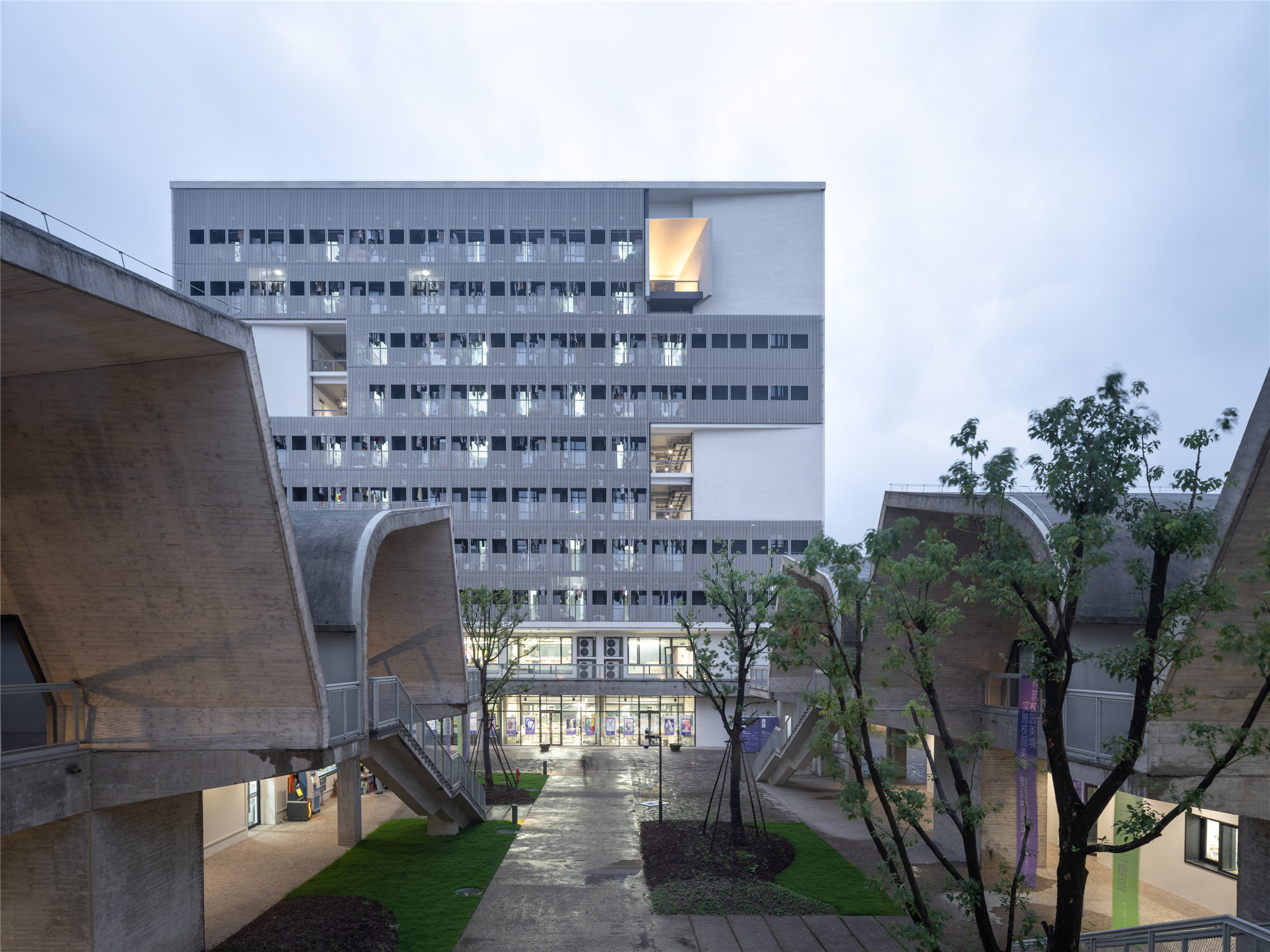

设计单位 非常建筑
项目地址 浙江杭州
竣工时间 2021年(一标段)
建筑面积 180,000平方米
中国美术学院(国美)新校区的所在地良渚,是位于杭州市北部的一个片区。在良渚校区,作为以艺术为本的综合大学国美共设立了四个学院,分别是创意设计学院、艺术管理学院、基础教育学院和继续教育学院。该校园将容纳3000名全时学生和1000名继续教育学生,并建立起四个教研方向——发展跨学科创新人才、推动设计与信息经济、融入人工智能技术、建立当代设计教育新标杆。
Liangzhu is an area in the city of Hangzhou where a new campus of China Academy of Art (CAA) is sited. At Liangzhu, this art based comprehensive university plans to have four academic divisions, which are College of Innovative Design, College of Art Management, College of Foundational Education, and College of Continuing Education, and will house 3000 full-time students and 1000 continuing education students. The four main objectives of this new campus include developing interdisciplinary innovative talents; promoting design and informational economy; integrating artificial intelligence technology; and setting another bench mark for contemporary design education.



在校园设计竞赛阶段,国美要求参与建筑师想象一个能够帮助实现上述目标的教育体系。我们意识到学生在入学时即确定专业的做法已不符合当今高等教育的精神,于是建议了一个有着如下特征的教学框架:
At the stage of the campus design competition, CAA asked the participating architects to envision an educational system that would meet the mandates given. We understood that deciding a major while entering college is no longer the best way for today’s higher education and proposed a conceptual framework for learning that is defined by the following:
1、手脑并用。每个学生,无论其未来发展方向,均需接受有关制作的基础课程,例如绘画、设计或建筑等;
1. Use head and hands. Every student, regardless his/her discipline or concentration, have to take courses that engage making, from drawing/painting to design/architecture, as part of the foundations.
2、高年级的课程以研究项目为主导,培养学生解决实际问题及跨学科团队合作的技能;
2. Classes as research projects for advanced level, which allows students to acquire skills to work as an interdisciplinary team and solve real-world problems.
3、取消“系”的设置,对知识进行整合。
3. Abolish departments so that knowledge is not compartmentalized.




基于以上具有设计策划意义的研究,我们认为建筑可以也应该成为教育体系的一部分。那何种校园空间有利于动手和实验,并鼓励学生之间在课内外互动与合作?尽管传统教室仍然有其存在的必要性,但在良渚,主要的教学空间被重新定义为开放、延绵的工坊。
Furthering the above-mentioned important programming exercise, we believe that architecture can and should be part of the educational system. What kind of space for a campus that is able to facilitate making and experimentation as well as to encourage students to interact with each other in and out of classes to nurture collaboration?




在工坊中,可以进行常规课程的教授,也可以是学生们或独自阅读写画或结伴搭建讨论的场所。在工坊中,校园上所有的活动尽可一览无余,学生一边沉浸在自己的兴趣中,一边也不难发现到其他同学从事的种种创作。我们希望在这个校园环境中能够模糊教导和学习、研究与实践的界线。
While traditional classrooms are still necessary, the main teaching-learning space at Liangzhu is redefined as an open, continuous studio, where classes can be held and students may, individually or collectively, read, write, draw, build, discuss, or debate. In this space, all the activities on campus are visible, which means that a student can be constantly aware of what others are working on while pursuing his/her interests. We hope to blur teaching and learning, research and practice in this particular school environment.






高耸的拱顶给工坊带来充分的自然光,也给大型的建造及事件,如会议、戏剧/舞蹈演出等创造了条件。
the vaulted spaces of which would allow ample natural light, large-scale installations as well as events, such as conferences and drama/dance performances.
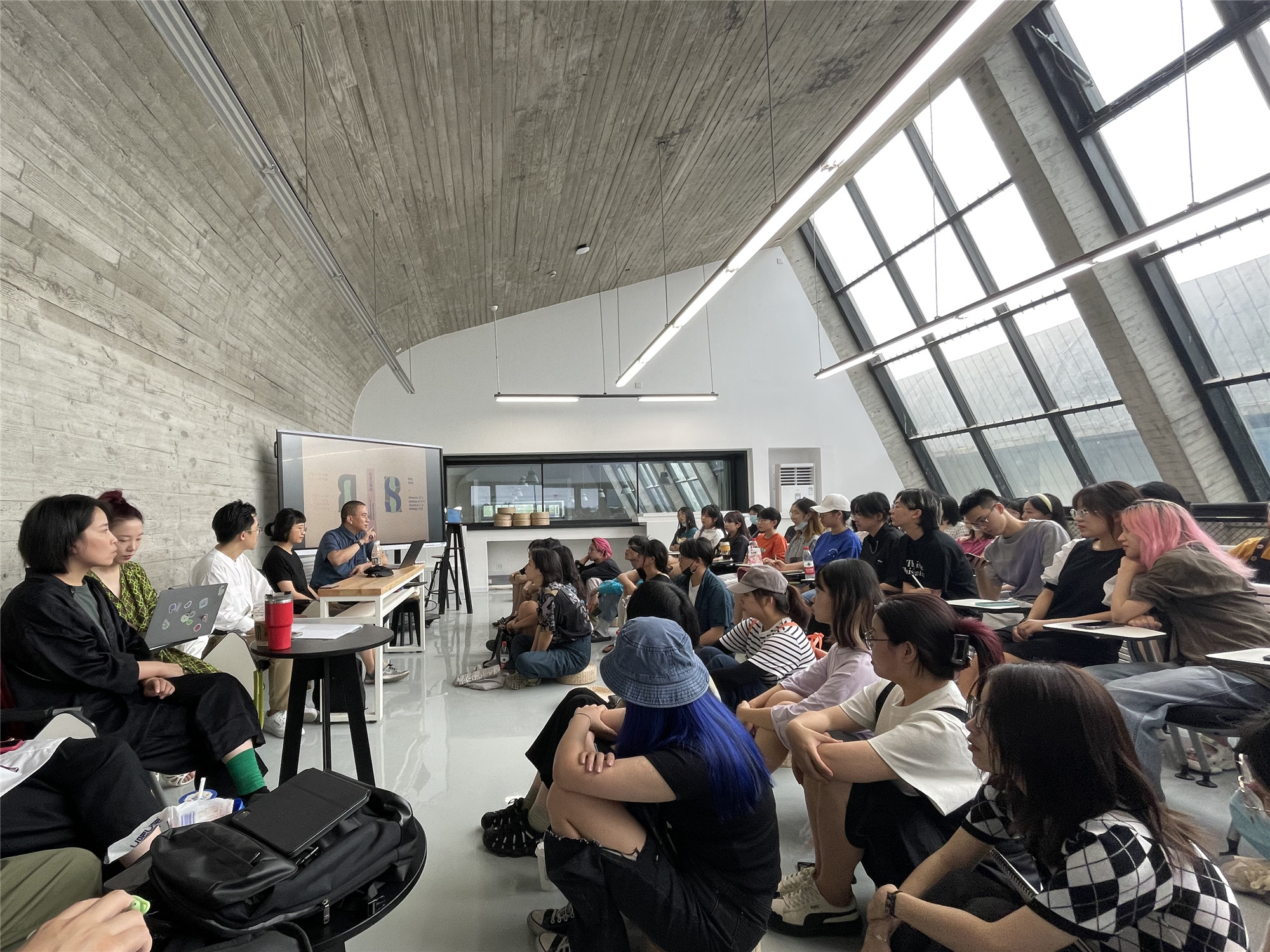

在良渚,学生就住在工坊之上。工坊、公共空间、宿舍自下而上的垂直布置把学生的生活和学习融为一体,体现了“校园即社区”的理念。宿舍被称为“学舍”,因为其中设置了专门为学生自发组织“兴趣社”的空间,而兴趣社也是学生自学课程的一种形式。我们希望通过建筑向学生推介“生活即教育”的思想,这正是良渚校园规划及工坊设计背后的核心理念。
At Liangzhu, students live upstairs of the studios. The vertical stratified system of dormitory, social space and studios creates an architecture that embodies the concept of "college as community" where students live-study under one roof. Within the dormitories, there are spaces provided to the students for themselves to organize “hobby clubs,” which are a form of self-taught courses. We hope to convey to the students the notion of living is learning, which makes up the core ideas of this campus design along with the studios.




同时,从设计概念上,良渚校园也是开放的。目前,国美已经为良渚的新生们开设了一门课,在课上老师邀请同学们想象他们利用校园空间的方式,即想象如何将校园拥为己有。
In many ways, CAA Liangzhu is an open project. The in-coming students have been asked to imagine the ways they will engage the architectural spaces of this campus in a workshop to make the campus their own.




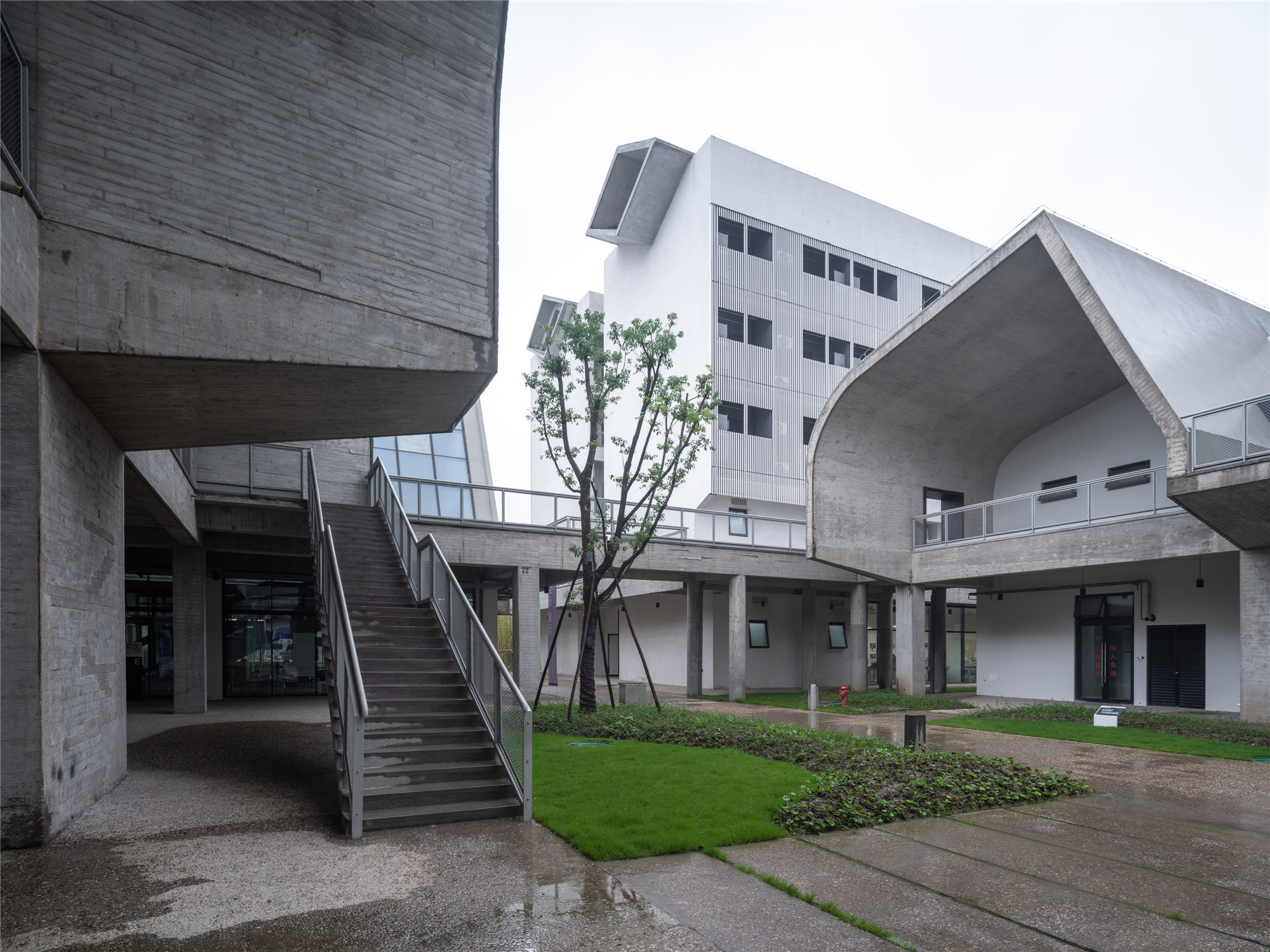

在良渚,不但没有教学区与生活区之分,所有的建筑都用廊子相串连,形成了一个只有一栋建筑的校园。
Since there are no separate zones for teaching facilities and living quarters typical for a college campus, all the buildings at Liangzhu are connected by covered walkways and conceptually woven into a single piece of architecture.



为了满足学生们晾晒衣服的需要,同时又不影响混合使用校园对建筑外表统一的追求,我们在学舍的阳台外面设计了一个整体的格栅系统,达到既整洁又遮阳的目的。在多层学舍的屋顶等多处,我们还设计了一系列名为“探索器”的半室外纯建筑空间,以进一步丰富校园生活。
Due to the habit of hanging laundry in the dormitory balconies, this mixed-use spatial organization calls for a tidier than usual appearance for the dormitories. A continuous metal louvre is thus devised on the building exteriors to screen off laundry as well as air conditioners while serving as sunshades. On the rooftops of the dormitories, we designed a series of semi-outdoor spaces named “view-finders,” which is aimed at further enriching the campus life of Liangzhu.



出于施工管理的需要,良渚国美分为两个阶段建造。一期已完工,于2021年9月迎来了第一批学生。整个校园将于2023年完成。
For the purpose of construction management, the CAA Liangzhu project was scheduled in two phases. The first phase was completed in July 2021, and classes began in September of the same year. The entire campus is due to open in 2023.

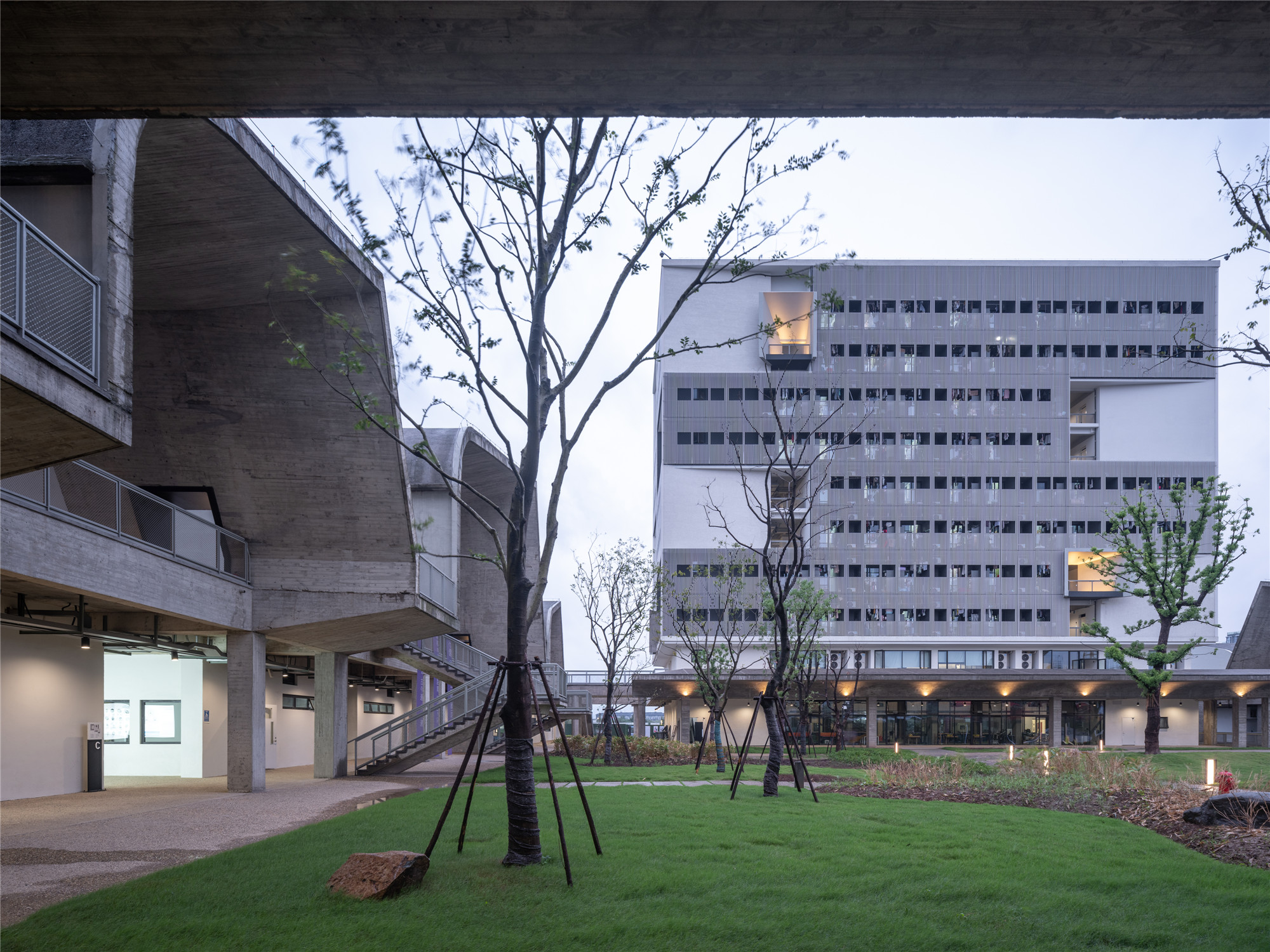





设计图纸 ▽












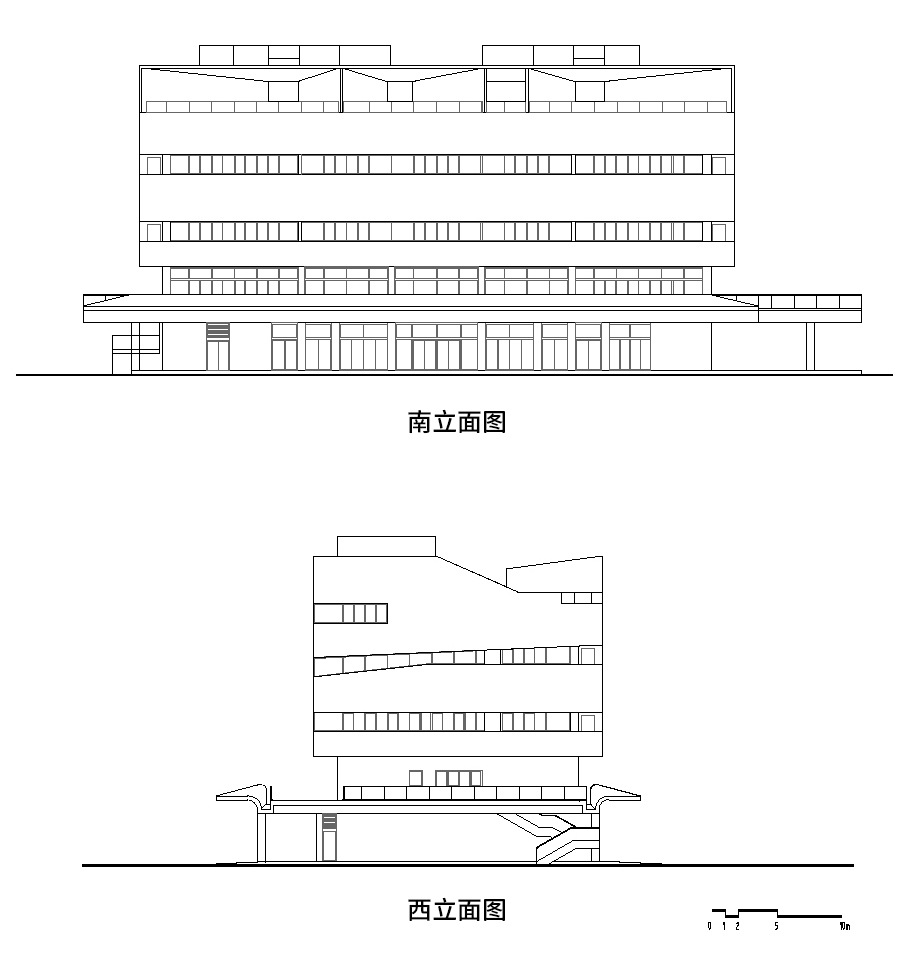

完整项目信息
客户: 中国美术学院
地址:浙江省杭州市良渚
主持建筑师:张永和、鲁力佳
项目团队
建筑:尹舜、王玥、龙彬、黄舒怡、王文志、梁小宁、刘扬、柳超、张博文、王硕、程艺石、何泽林、师琦、林诗洁、李相廷、谢岩旭、焦慧敏;室内:王玥、张敏、韩书凯、李帅;景观:师琦、尹舜、林诗洁;现场协调:李诗琪
施工图设计:同济大学建筑设计研究院(集团)有限公司 建筑设计三院
照明顾问:TJAD建筑照明所
建筑面积:180,000平方米
结构和材料:钢筋混凝土结构
设计周期:2018年3月—2019年6月
竣工时间:2021年(一标段)
版权声明:本文由非常建筑授权发布。欢迎转发,禁止以有方编辑版本转载。
投稿邮箱:media@archiposition.com
上一篇:云状漂浮:世纪海角商业街 / 大料建筑
下一篇:非常建筑新作:中国美术学院良渚校区,一期全场落成